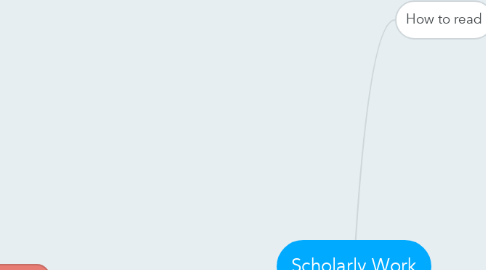
1. How to observe the rules of academic integrity
1.1. 1. what is plagiarism
1.1.1. to steal and pass off (the ideas or words of another) as one's own
1.1.2. to use (another's production) without crediting the source
1.1.3. to present as new and original an idea or product derived from an existing source
1.1.4. to buy paper online
1.1.5. to reuse the paper from other class
1.2. 2. cause of plagiarism
1.2.1. Get fail on the paper
1.2.2. Fail the class
2. How to read
2.1. 1. Caveat: no single style works for everyone!
2.2. 2. Klein’s basic steps for skimming, scanning, processing
2.2.1. Read the abstract (if provided)
2.2.2. Read the introduction.
2.2.3. Read the conclusion.
2.2.4. Skim the middle, looking at section titles, tables, figures, etc.—try to get a feel for the style and flow of the article.
2.2.4.1. Is it methodological, conceptual, theoretical (verbal or mathematical), empirical, or something else?
2.2.4.2. Is it primarily a survey, a novel theoretical contribution, an empirical application of an existing theory or technique, a critique, or something else?
2.2.5. Go back and read the whole thing quickly, skipping equations, most figures and tables.
2.2.6. Go back and read the whole thing carefully, focusing on the sections or areas that seem most important.
2.3. 3. Once you’ve grasped the basic argument the author is trying to make, critique it!
2.3.1. Ask if the argument makes sense. Is it internally consistent? Well supported by argument or evidence?
2.3.2. Compare the article to others you’ve read on the same or a closely related subject. (If this is the first paper you’ve read in a particular subject area, find some more and skim them. Introductions and conclusions are key.) Compare and contrast. Are the arguments consistent, contradictory, orthogonal?
2.3.3. Use Google Scholar, the Social Sciences Citation Index, publisher web pages, and other resources to find articles that cite the article you’re reading. See what they say about it. See if it’s mentioned on blogs, groups, etc.
2.3.4. Check out a reference work, e.g. a survey article from the Journal of Economic Literature, a Handbook or Encyclopedia article, or a similar source, to see how this article fits in the broader context of its subject area.
3. How to write
3.1. 1. gathering all the evidence and points of view and plopping it all in a paper
3.2. 2. take a STAND
3.2.1. Back it up with PROOF, INFORMATION and EXAMPLES. (StPIE)
3.3. 3. visit one of the best writing help resources on the Web
3.3.1. Purdue's OWL
3.4. 4. deconstruct this a bit further by studying their section on academic writing
3.4.1. Genre, topic, audience, and beginning
3.5. 5. able to glide through the writing process
3.5.1. Research, decide your position, mind map your ideas and evidence, arrange in a flow where each paragraph builds on the next.
